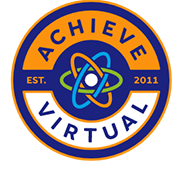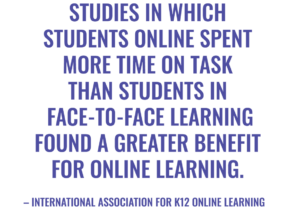
Not all students receive their education in a traditional classroom setting. In fact, there are many routes for obtaining an education to consider if you’re not thriving in your current situation. It may be surprising to discover some options you haven’t considered – but ones which have proved to be highly effective for specific learning needs.
1. Homeschooling
Homeschooling is a way for individuals to learn in a private setting, usually at home. Parents who choose this method can take on the responsibility of directing the education of their children.
This style of education is becoming more prominent as the necessary tools become more accessible. Some of the benefits of homeschooling include:
- Greater parental involvement
- More quality time with your children
- Schedule flexibility
- Full credits that count towards a degree
2. Montessori
Montessori is a specific educational approach tailored around the growth of an individual’s psychological, social and physical development. This method of learning has been heavily focused on children ages 2.5-6 years of age; however, programs have been expanded to cater to middle school and high school individuals.
These classrooms encourage freedom of movement by the students, and offer a variety of chosen activities in which students can learn with a hands-on approach as opposed to being verbally instructed. The environment is meant to hone a student’s independence, and each room is supplied with activities and tools that are in correlation with the age of the students.
Benefits of Montessori include:
- Each student’s style and pace of learning is treated individually
- Advancing through the curriculum occurs only when students are ready
- Classrooms have greater spans of age (typically 3 years) to re-create family structures with room for individuals to gain leadership and role model skills
- Montessori programs embrace diversity and create programs that will give students the tools to be successful in the 21st century
3. Private Tutor
Private tutors are individuals who are knowledgeable in specific topics but who are not a part of a school board. Tutors are most consistently required by students who are in search of extra help outside of school hours or who need help preparing for their academic examinations.
Tutors are available over phone, online or in person and are paid by the hour for their services. The benefits of a tutor include:
- One-on-one focus with students
- Flexible schedules and after-school hours
- Wide variety of teaching topics
- Individualized styles of teaching to meet the needs of the student
- Can help to re-visit topics not mastered that the classroom has already moved on from
4. Online Classes
Online classes are a style of teaching that requires only a computer and Internet connection. Students can do online classes at any age or grade level, and they may take part in their online classes from whatever location they choose.
Benefits of online classes include:
- Flexible schedule for students
- Material is accessible to re-visit until the topic is mastered
- Students are taught personal responsibility and schedule balancing
5. Harkness
A discussion-based teaching method, Harkness requires that students sit at an oval or circle-shaped table and use conversation to encourage ideas and discussion. Harkness is a tool for students to become confident in voicing their own opinion and to learn the importance of listening as well as speaking.
Generally, the method of Harkness requires that a teacher be present throughout to guide discussion when necessary, but that students are given the reigns to give their own opinion and consider the views of others.
Benefits of Harkness include:
- Increased confidence in presentation
- Greater speaking skills
- Ability to present respectful skills in discussion or debate environments
Every person learns differently, and sometimes a different teaching technique can help someone better absorb information.
While in-school, lecture-based classrooms still teach to the large majority of students, these other options are steadily growing in popularity and are making their way into mainstream education.


